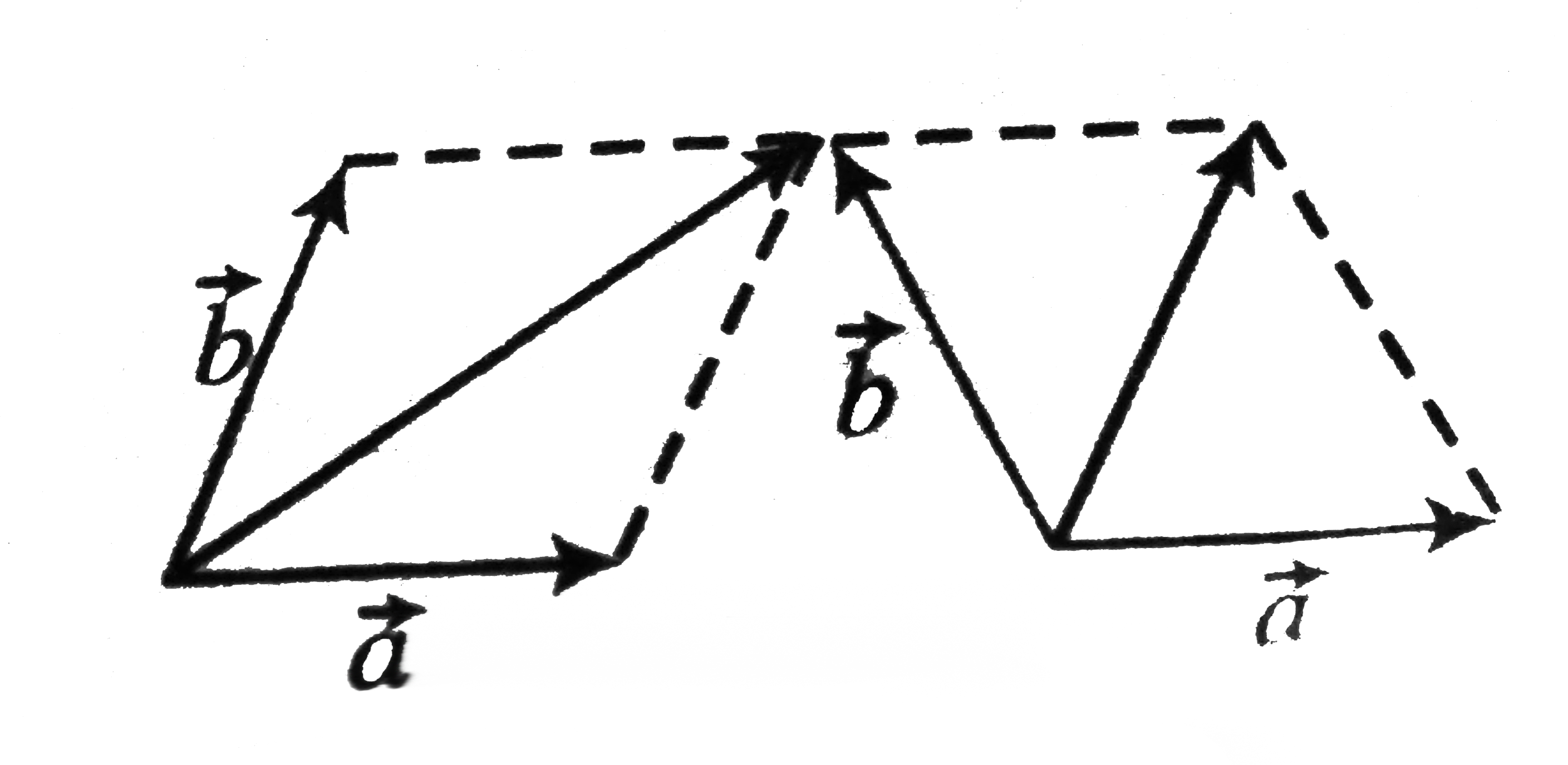If a parallelogram is formed with two sides represented by vector →a and →b, then →a+→b represents the
Major diagonal when the angle between vectors is acute
Minor diagonal when the angle between vector is obtuse
Both of the above
None of the above
The correct Answer is:C
→a+→b→ major diagonal,
→a+→b→ major diagonal

Topper's Solved these Questions
- BOOK - CENGAGE PHYSICSCHAPTER - VECTORSEXERCISE - Exercise Multiple Correct5videos
VECTORS
- BOOK - CENGAGE PHYSICSCHAPTER - VECTORSEXERCISE - Exercise Subjective28videos
VECTORS
- BOOK - CENGAGE PHYSICSCHAPTER - TRAVELLING WAVESEXERCISE - Integer9videos
TRAVELLING WAVES
- BOOK - CENGAGE PHYSICSCHAPTER - WORK, POWER & ENERGYEXERCISE - Archives (integer)4videos
WORK, POWER & ENERGY
Similar Questions
Given two vectors →A=3ˆi+ˆj+ˆk and →B=ˆi−ˆj−ˆk.Find the
a.Area of the triangle whose two adjacent sides are represented by the vector →A and →B
b.Area of the parallelogram whose two adjacent sides are represented by the vector →A and →B
c. Area of the parallelogram whose diagnoals are represented by the vector →A and →BView SolutionArea of a parallelogram with adjacent sides determined by vectors →aand→b is 30. Then the area of the parallelogram with adjacentsides determined by vectors (→a+→b)and→a is
View Solution
Knowledge Check
- Question 1 - Select One
ABCD is a parallelogram whose adjacent sides are represented by he vectors →a and →b. Three of its vertices are A(1,2,3),B(2,0,5) and D(-1,4,1).

The vector →a= _______.A2ˆi−ˆj+ˆkBˆi−2ˆj−2ˆkCˆi−2ˆj+2ˆkD2ˆi−ˆj+2ˆk - Question 2 - Select One
ABCD is a parallelogram whose adjacent sides are represented by the vectors →a and →b. Three of its vertices are A(1,2,3),B(2,0,5) and D(-1,4,1).

The diagonal →c= _________.Aˆi+3ˆj+5ˆkBˆi+ˆj−ˆkC−ˆiD−ˆj - Question 3 - Select One
ABCD is a parallelogram whose adjacent sides are represented by he vectors →a and →b. Three of its vertices are A(1,2,3),B(2,0,5) and D(-1,4,1).

The diagonal →d= ___________.A−ˆiB−3ˆi+4ˆj−4ˆkCˆi+2ˆj−ˆkDˆi
Let →a=ˆi+αˆj+3ˆk and →b=3ˆi−αˆj+ˆk .If the area of the parallelogram whose adjacent sides are represented by the vectors →a and →b is 8√3square units,then →a⋅→b is equal to
View SolutionLet ABCD be the parallelogram whose sides AB and AD are represented by the vectors 2→i+4→j−5→k and →i+2→j+3→k respectively. Then if →a is a unit vector parallel to →AC ,then →a is equal to
View SolutionIf for two vectors →A and →B,→A×→B=0, the vectors
View SolutionThe area of a triangle formed by the sides of vector →Aand→B is
View SolutionIf →aand→b are two unit vectors, then the vector (→a+→b)×(→a×→b) is parallel to
View Solution

